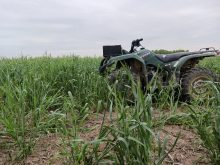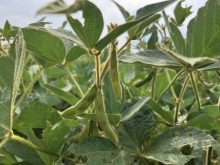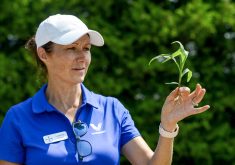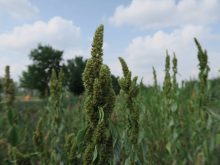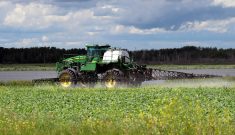A new safer and more environmentally friendly crop protection technology will create challenges and opportunties for innovation in the agricultural sector.
Closed transfer systems (CTS) “…permit the direct transfer of pesticides from container to sprayer while isolating the process from the operator and the environment,” according to the website Sprayers101.com.
Chris Duyvelshoff, the Ontario Fruit and Vegetable Growers’ Association’s crop protection advisor, said CTS could positively influence the Pest Management Regulatory Agency‘s (PMRA) operator occupational risk assessment decisions.
Why it matters: Closed transfer eliminates point source contamination and ensures operator safety by removing the potential for chemical exposure during container transfers or rinsing.
Read Also
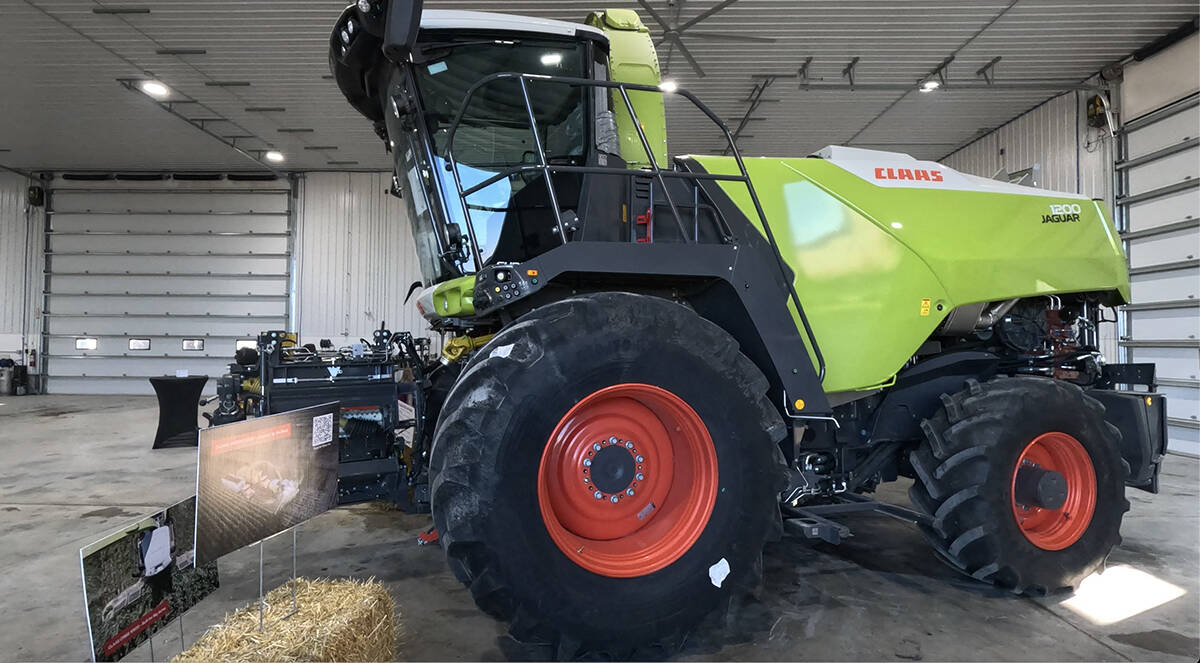
Claas brings 1000 Series SP forage harvesters to Canada
In mid-August, Claas unveiled its new line of Jaguar forage harvesters at an event in Visalia, California, deep in the heart of that state’s dairy region.
“If they found (existing PPE requirements are) not quite enough to get it to the level that passes their risk assessment, when they factor CTS into the calculation, it’s given enough of that additional safety margin that it’s passed the product,” he said during the Ontario Potato Conference last month.
CTS addresses point source contamination, where drips or dribbles occur during product transfer from one container to another, such as a sprayer or tank mixer.
Jason Deveau, application technology specialist with the Ontario Ministry of Agriculture, Food and Agribusiness, said the amounts are minuscule. However, the European model, involving a one-way valve cap, has proven CTS further reduces exposure by 14 times.
“It’s not hard to get behind the concept — it’s faster, safer, and cleaner. Those all sound like great things,” Deveau said. “It’s the execution that we haven’t figured out yet. We have a working solution for most of these products. It’s not elegant, but we have a very elegant solution across the pond.”
Several commercial closed transfer systems are available in Canada, including those compatible with a 63-millimetre cap, such as EasyFlow or GoatThroat, and cap and couplers, with an integrated foil-slicing blade, such as the Easyconnect cap and Ezi-connect coupler for containers between one and 15 litres.
The European one-way valve cap and coupler, similar to Canada’s option, allow for extracting a preset amount of chemicals and rinsing and resealing the container or cap. However, in Europe, the 16 global companies that collaboratively developed the system for multiple makes and models of sprayers and pesticide container formats retrofitted existing products and integrated them into new products.
“Syngenta took it one step further; they redesigned the whole jug. It’s pretty amazing,” Deveau explained, adding North American companies won’t likely initiate a similar change without regulatory demands because it’s too costly.
So far, only Lorox L, Sevin XLR, Etherel, Dibrom, Captan 480SC, Captan L Fungicide, and Bravo ZN have Canadian CTS designations. Bravo and both Captan labels outline caveats regarding specific volumes, products and thresholds.
“Not every product will need this,” said Deveau. “(However,) that list will continue to grow as products go through their natural re-evaluation cycle.”
What’s important is maintaining the products we have, said Duyvelshoff.
Registrations
In 2024, PMRA introduced five new Category A products for Canadian agriculture: one conventional and four biologicals. These include Biox-Ma biological sprout inhibitors for potato storage, Diflufencian (from Bayer), the only Group 12 herbicide in Canada, two new bio-insecticides and one bio-fungicide.
New technologies are available, but entering the Canadian market is increasingly complex and slow. This is partly due to cuts to the Environmental Protection Agency (EPA) south of the border.
“Believe it or not, we have registrations that have been approved by PMRA,” he explained. “They’re ready to go, but the companies are not selling into Canada because they haven’t completed their registration process at EPA and do not have a U.S. MRL (maximum residue limits).”
Overall, the 2024 review results were positive. Re-approvals required little change, and only one, Dual, required additional comment on a proposed 12-month restriction on planting another crop following application.
“That’s not workable, and we did submit some comments on that proposal, so we’ll see what happens with that,” Duyvelshoff said. “There’s also a proposed new decision on Pydiflumetofen (Miravis) that looks quite positive.”
He anticipates a busy 2025, with PMRA final decisions on chlorothalonil (Bravo and Echo) expected in March and abamectin (Agri-Mek, Minecto Pro) sometime in the spring.
Consultations for novaluron (Rimon/Cormoran) launch this spring, followed by clothianidin (Clutch/Titan), thiamethoxam (Actera/Cruiser), spinetoram (Delegate) and spinosad (Entrust) in the summer, and famoxadone (Tanos) and fenamidon (Reason) in the winter.
“There’s a lot of products for potatoes that are on the consultation list this year that are going to be important to watch,” he said. “We’ve got five insecticides, all related to potato, four neonicotinoids, Clutch, Titan and Actera, Cruiser.”
Duyvelshoff will follow the reviews closely and potentially reach out to producers for data illustrating the application’s importance.
“There is an opportunity at the consultation stage of these decisions to provide updated information on how the product is actually used,” Duyvelshoff said, adding that reliable and representative data can potentially save label uses if there’s a risk assessment issue.
Obtaining and aggregating data can be complex, and they’re examining the different software programs used by various industries to track general usage information. OFVGA, working with OMAFA, launched a project to program Crop Tracker to provide provincial report averages for apples on the typical active ingredient, rates and applications in the province where the associations completely control the data.
“It’s not handing over your database to the PMRA or any other associations; it’s a summary report that the commodity association controls and decides who they give it to.”







